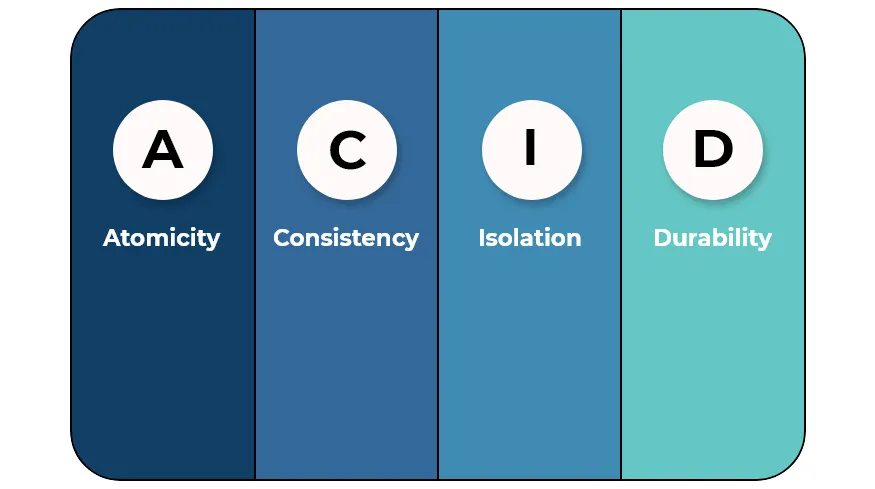As a database professional, you’ve likely encountered SQL transactions in your day-to-day work.
Understanding the underlying principles and best practices governing these transactions is essential for ensuring data consistency and reliability.
In this blog post, we’ll delve into SQL transactions, their ACID properties, and best practices for using them effectively.
Table of Contents
- What are SQL Transactions?
- ACID Properties of SQL Transactions
- Best Practices for SQL Transactions
- Summary
What are SQL Transactions?
A SQL transaction is a sequence of one or more database operations executed as a single unit of work.
These operations can include INSERT, UPDATE, DELETE, or SELECT statements, and are either entirely completed or entirely rolled back in the case of an error or failure.
This ensures data consistency and integrity in the database.
ACID Properties of SQL Transactions
ACID stands for Atomicity, Consistency, Isolation, and Durability – the four fundamental properties that ensure the reliability and integrity of database transactions.
Atomicity
Atomicity guarantees that either all operations within a transaction are executed or none of them are. If any part of the transaction fails, the whole transaction is rolled back, and the database remains in a consistent state.
Example:
BEGIN TRANSACTION;
INSERT INTO orders (order_id, customer_id, order_date) VALUES (1, 101, '2023-04-01');
INSERT INTO order_items (order_id, product_id, quantity) VALUES (1, 2001, 3);
COMMIT;
In this example, both INSERT statements will be executed, or neither will be executed if there’s an error in one of the statements.
Consistency
Consistency ensures that the database transitions from one consistent state to another after a transaction is completed.
This means that all data integrity constraints must be satisfied before a transaction is committed, and any violation of these constraints will cause the transaction to be rolled back.
Example:
Suppose there is a constraint on the ‘order_items’ table requiring the ‘quantity’ to be greater than 0. If a transaction attempts to insert a row with a negative quantity, the transaction will be rolled back to maintain consistency.
Isolation
Isolation prevents the effects of one transaction from being visible to other transactions until the original transaction has been committed.
This property ensures that concurrent transactions are executed independently and do not interfere with each other, avoiding potential data inconsistencies.
Example:
Suppose two transactions, T1 and T2, are executed concurrently. T1 reads data from a table, and T2 updates the same data. Isolation ensures that T1 will only see the data before the update or after the update but not during the update process.
Durability
Durability guarantees that once a transaction has been committed, its effects will be permanently stored in the database, even in the event of a system crash or power failure.
Example:
If a transaction modifies data in a table and is committed, the modified data is guaranteed to be stored in the database and not lost in case of a system failure.
Best Practices for SQL Transactions
Use transactions wisely
Only use transactions when necessary. Transactions introduce complexity and can impact performance. However, they are indispensable when dealing with multiple related operations that need to be executed as a single unit of work to maintain data integrity.
Keep transactions short
Long-running transactions can cause contention and reduce database performance.
Minimize transaction duration by reducing the number of operations within a transaction or by optimizing the operations themselves.
Be sure to commit or roll back transactions promptly to release resources and minimize locking.
Manage locks and deadlocks
Understand the locking mechanisms used by your database management system (DBMS) and optimize lock settings to minimize contention.
Be prepared to handle deadlocks by implementing error handling and retry logic in your application.
Choose the appropriate isolation level
Select the right isolation level based on your application’s requirements for consistency and performance.
Lower isolation levels can provide better performance but might allow for more concurrency-related issues, while higher isolation levels ensure stronger data consistency at the cost of increased contention and reduced performance.
Optimize queries and indexes
Ensure that the SQL statements within a transaction are optimized for performance. Use appropriate indexes to speed up data retrieval and minimize the impact on other concurrent transactions.
Test and monitor
Thoroughly test your transactions to ensure they are functioning as intended and handling errors gracefully.
Monitor your database system to identify performance bottlenecks, lock contention, or other issues related to transactions, and optimize your code accordingly.
Summary
Understanding the ACID properties of SQL transactions and following best practices is crucial for maintaining data integrity and consistency in your database.
By wisely using transactions, keeping them short, managing locks, choosing the right isolation level, optimizing queries, and monitoring performance, you can ensure that your database operates reliably and efficiently.


